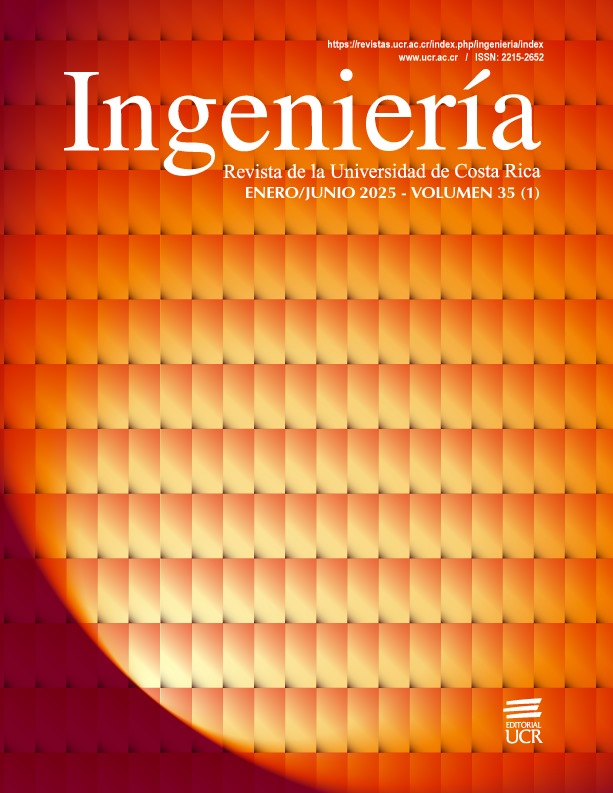Abstract
Technology facilitates decision-making regarding infrastructure design, in particular, to weigh different climatic scenarios to which a work may be exposed. Specifically, the design and construction of educational infrastructure in the country present relevant challenges in terms of sustainability and comfort. In this research, the 6D BIM methodology was implemented to evaluate thermal comfort in three typical MEP plans across different locations in the country: Nicoya, Pavas, and Limón. The relevance of using BIM –energy analysis– to estimate thermal comfort in buildings, applied to the indicated case studies, was evaluated, using 3D modeling programs such as SketchUp and the OpenStudio application for 6D analysis. Among the main results, it was noted that the current generic type plans do not respond to the different needs of the student body in the different climatic zones studied in the country, nor were they conceived taking into account the diverse realities of the environments where they will be built. It was concluded that incorporating changes in ceiling and wall materials improves the current comfort conditions, demonstrating the need to redesign these plans in order to achieve comfortable temperatures. This research highlights the importance of the 6D BIM methodology in the efficient planning of educational spaces; in addition, its conclusions can be applied to other types of public service infrastructure where people must be housed.
References
Comisión Económica para América Latina y el Caribe de la Organización de Naciones Unidas, La Agenda 2030 y los Objetivos de Desarrollo Sostenible: una oportunidad para América Latina y el Caribe. Santiago, Chile: Publicación de Naciones Unidas, 2018. [en línea]. Disponible en: www.issuu.com/publicacionescepal/stacks
W. Gonzalez y C. Lesmes, “Siete dimensiones de un proyecto de Construcción con la metodología Building Information Modeling”, L´Esprit Ingenieux, vol. 8, no. 1, ene. 2017. [en línea]. Disponible en: https://www.researchgate.net/publication/339300817_Siete_dimensiones_de_un_proyecto_de_construccion_con_la_metodologia_Building_Information_Modeling_Revista_LEsprit_Ingenieux_8_1_2017?_tp=eyJjb250ZXh0Ijp7ImZpcnN0UGFnZSI6Il9kaXJlY3QiLCJwYWdlIjoicHVibGljYXRpb24ifX0#full-text
Programa Estado de la Nación, "Octavo Estado de la Educación 2021", Consejo Nacional de Rectores, Pavas, Costa Rica, sep. 2021.
F. Denis, The guide to Building Information Modelling. Bruselas, Bélgica: ADEB-VBA, oct. 2015. [en línea]. Disponible en: www.vub.ac.be/ARCH/ae-lab/transform
P. Smith, “BIM implementation - Global strategies”, Procedia Engineering, vol. 85, pp. 482–492, 2014, doi: 10.1016/j.proeng.2014.10.575.
M. Carmona y E. Mata, “Propuesta para la implementación de la metodología BIM en los proyectos deobra pública de Costa Rica”, Met. y Mat., vol. 10, pp. 35-47, dic. 2019, doi: 10.15517/mym.v10i0.42257.
Ministerio de Planificación Nacional y Política Económica, “Hoja de Ruta para la adopción de BIM en Costa Rica”, Gobierno de Costa Rica, San José, Costa Rica, 2022.
J. Montenegro et al., Guía de implementación BIM para empresas. San José, Costa Rica: BIM Forum Costa Rica y Cámara Costarricense de la Construcción, ago. 2018. [en línea]. Disponible en: www.construccion.co.cr/BimForum
J. Messner et al., BIM Project Execution Planning Guide-Version 2.2. University Park, PA, Estados Unidos: Penn State, 2019.
C. Soto, S. Manriquez, N. Tala, C. Suaznabar y P. Henriquez, Guía para la implementación de Building Information Modelling a nivel de pilotos en proyectos de construcción pública. Washington, DC, Estados Unidos: Banco Interamericano de Desarrollo, oct. 2022, doi: 10.18235/0004528.
R. Lacomba et al., Manual de arquitectura solar. Ciudad de México, México: Trillas, abr. 1991.
P. Dohmen, P. Liebsch y H. Sautter, LOD / LOI DEFINITIONEN Informationen zur Detaillierungs-und Informationstiefe BIM V1.0 Ein Dokument des BIM Praxisleitfaden, 2016.
L. Brackney, A. Parker, D. Macumber y K. Benne, Building Energy Modeling with OpenStudio. Cham, Suiza: Springer International Publishing, may. 2018.
National Renewable Energy Laboratory, Estados Unidos., OpenStudio 1.9.0 Basic Workflow Guide. (2015). [en línea]. Disponible en: http://nrel.github.io/OpenStudio-user-documentation/img/pdfs/openstudio_interface_quickstart.pdf
A. Maristany y S. Angiolini, Calor, envolventes y eficiencia energética Instalaciones 2B. Córdoba, España: Editorial de la Facultad de Arquitectura y Urbanismo de la Univ. Nacional de Córdoba, 2017.
Thermal Environmental Conditions for Human Occupancy, ASHRAE 55-2017, ASHRAE, 2017.
L. A. Quirós, “La metodología BIM 6D para la evaluación del confort térmico y eficiencia energética aplicada a edificaciones tipo de centros educativos del MEP”, Tesis de licenciatura, Univ. de Costa Rica, San José, Costa Rica, 2024.
Instituo Metereológico Nacional, "Estaciones Automáticas". IMN.ac.cr. https://www.imn.ac.cr/web/imn/estaciones-automaticas (accesado en ene. 24, 2023).
L. Lawrie y D. Crawley, “Repository of free climate data for building performance simulation”. Climate.OneBuilding.Org. https://climate.onebuilding.org/ (accesado en feb. 3, 2023).
##plugins.facebook.comentarios##

This work is licensed under a Creative Commons Attribution-NonCommercial-ShareAlike 4.0 International License.
Copyright (c) 2024 Nidia Cruz Zuniga, Luis Alejandro Quirós Avendaño



